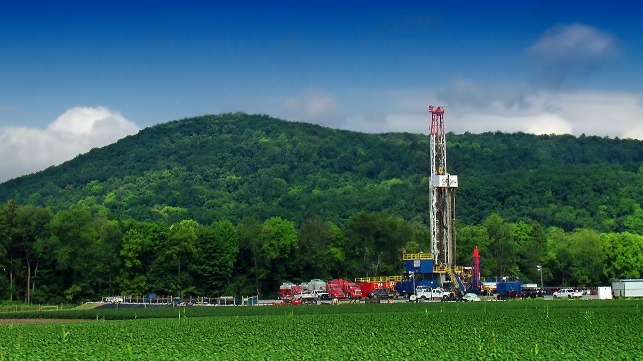ABS Releases Detailed Analysis of Alternative Fuel "Value Chain"

Just in time for Earth Day, the American Bureau of Shipping has released a comprehensive well-to-wake analysis of all commonly-proposed alternative marine fuels, including a detailed re-examination of fuel production and transport processes.
In the case of conventional LNG, fuel production means the production, transport and liquefaction of natural gas. That production and transport process results in fugitive emissions of methane, a greenhouse gas with roughly 30 times the warming potential of CO2 on a 100-year time horizon. The total well-to-wake GHG profile of the fuel depends in no small part on the scale of fugitive emissions in the supply chain - long before the fuel reaches the bunkerer, shipowner or operator.
Methane slip - the much-discussed release of unburned LNG fuel in the engine exhaust - is a much less important factor than the fugitive emissions from the upstream and midstream sectors, according to ABS. "Methane slip is only a fraction of the methane emitted to the atmosphere across the LNG production, distribution, and bunkering chain," wrote ABS. "The United States Environmental Protection Agency (EPA) estimates methane emissions from U.S. natural gas production to be approximately 1.4 percent of the gross gas produced; however, recent studies have demonstrated that this value may be underestimated by as much as 60 percent."
For these values, ABS referred to a 2018 inventory of emissions covering about 30 percent of the U.S. natural gas production base. The study, published in Science, estimated that the American natural gas industry is leaking roughly 2.3 percent of its production per year, primarily from well sites, isolation valves, pneumatic controllers and tank venting. This would amount to 13 million tonnes of methane annually, the GHG equivalent of about 400 million tonnes of CO2 over a century-long time horizon. On a shorter 20-year time horizon, "emissions of this magnitude, per unit of natural gas consumed, produce [warming effect] comparable to the CO2 from natural gas combustion," concluded the authors. (The study did not evaluate emissions from production in Qatar, Australia or other nations that produce LNG at scale.)
Alternatively, it is possible to produce a low- or zero-emission form of LNG from biomass (bio-LNG) using crop wastes and other waste sources. An electrofuel form of LNG (synthetic methane, derived from green hydrogen and CO2) is also possible, but ABS predicts that other power-to-liquid fuels will have a cost advantage.
"The energy required for [synthetic methane] production is very high and can only be economically attractive if the cost of renewable electricity used for production is low enough," ABS wrote. At an estimate $1,780 per tonne of synthetic LNG, the cost "is enough to render green LNG less attractive than green ammonia, even without accounting for the tank-to-wake emissions benefit of ammonia," ABS concluded.
Still, the study noted that LNG is seen as an important transition fuel for the marine and offshore sectors. A complete transition will not happen overnight: all of the "green" alternative fuels will be quite challenging to produce at scale. The study noted that any fuel based on green hydrogen would require enormous amounts of renewable electricy to produce, and other industries will be eyeing the same electrical power resources on the same timeline.
"The power required to produce green fuels for the entire global fleet would take 305,000 of the largest [15 MW] wind turbines," the study noted. "However, this task becomes more challenging if those green fuels also have to serve the purposes of other industries as well, such as the stationary power generation, automotive and aviation industries. Addressing this challenge will require an industry-wide coordinated effort but is expected to yield significant benefits for multiple industry sectors."
Top image: Natural gas drill rig in the Marcellus shale, 2012 (Nicholas A. Tonelli / CC BY SA 2.0)
